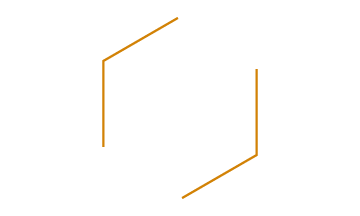Author Note
We are grateful for the insights from friends and colleagues in the Behavioural Insights Team, in particular to Owain Service and Michael Hallsworth, and to Craig Fox, Sim Sitkin, and three anonymous reviewers for thoughts on a draft of this article. Thanks are also due myriad collaborators on randomized trials described briefly herein who are too numerous to mention and to Chiara Varazzani, Aisling Ni Chonaire, and Ariella Kristal for research assistance.
Author Affiliation
Halpern, Behavioural Insights Team; Sanders, Behavioural Insights Team and Blavatnik School of Government, Oxford University. Corresponding author e-mail: [email protected]
References
1. Social Security and Medicare Board of Trustees. (2016). A summary of the 2016 annual reports. Retrieved March 5, 2017, from https://www.ssa.gov/oact/trsum/
2. Kirkham, E. (2016). 1 in 3 Americans have $0 saved for retirement. Retrieved from GOBankingRates website: https://www.gobankingrates.com/retirement/1-3-americans-0-saved-retirement/
3. Thaler, R. H, & Sunstein, C. R. (2008). Nudge: Improving decisions about health, wealth, and happiness. New Haven, CT: Yale University Press.
4. Thaler, R. H., & Sunstein, C. R. (2003). Libertarian paternalism. American Economic Review, 93(2), 175–179.
5. Halpern, D., Bates, C., Mulghan, G., & Aldridge, S. (with Heathfield, A., & Beales, G.). (2004). Personal responsibility and changing behaviour: The state of knowledge and its implications for public policy [Issue paper]. London, United Kingdom: Cabinet Office, Prime Minister’s Strategy Unit.
6. Halpern, D. (2015). Inside the nudge unit: How small changes can make a big difference. London, United Kingdom: WH Allen.
7. Thaler, R. H. (2015). Misbehaving: The making of behavioral economics. New York, NY: Norton.
8. Chetty, R. (2015). Behavioral economics and public policy: A pragmatic perspective. American Economic Review, 105(5), 1–33.
9. Hallsworth, M., List, J., Metcalfe, R., & Vlaev, I. (2014). The behavioralist as tax collector: Using natural field experiments to enhance tax compliance (NBER Working Paper No. 20007). Cambridge, MA: National Bureau of Economic Research.
10. Hallsworth, M., List, J. A., Metcalfe, R. D., & Vlaev, I. (2015). The making of homo honoratus: From omission to commission (NBER Working Paper No. 21210). Cambridge, MA: National Bureau of Economic Research.
11. Cabinet Office Behavioural Insights Team. (2012). Applying behavioural insights to reduce fraud, error and debt. Retrieved from http://38r8om2xjhhl25mw24492dir.wpengine.netdna-cdn.com/wp-content/uploads/2015/07/BIT_FraudErrorDebt_accessible.pdf
12. Haynes, L. C., Green, D. P., Gallagher, R., John, P., & Torgerson, D. J. (2013). Collection of delinquent fines: An adaptive randomized trial to assess the effectiveness of alternative text messages. Journal of Policy Analysis and Management, 32, 718–730.
13. Gallagher, R., Gyani, A., Halpern, D., Hanes, S., Kirkman, E., Reinhard, J., . . . Service, O (2016). Applying behavioural insights to the labour market: Evidence from two randomised trials [Working paper]. London, United Kingdom: Behavioural Insights Team.
14. Thaler, R. H., & Benartzi, S. (2004). Save More Tomorrow: Using behavioral economics to increase employee savings. Journal of Political Economy, 112(Suppl. S1), S164–S187.
15. Weinstein, N. D. (1980). Unrealistic optimism about future life events. Journal of Personality and Social Psychology, 39, 806–820.
16. Sunstein, C. R. (2014). Why nudge? The politics of libertarian paternalism. New Haven, CT: Yale University Press.
17. John, P., MacDonald, E., & Sanders, M. (2015). Targeting voter registration with incentives: A randomized controlled trial of a lottery in a London borough. Electoral Studies, 40, 170–175.
18. Chande, R., Luca, M., Sanders, M., Soon, X.-Z., Borcan, O., Barak-Corren, N., . . . Robinson, S. (2015). Curbing adult student attrition: Evidence from a field experiment (Harvard Business School Working Paper 15-065). Cambridge, MA: Harvard University.
19. Sanders, M., & Norton, M. (forthcoming). Network nudges: Leveraging social networks for charitable donations in two field experiments
20. Morse, A. (2010). Taking the measure of government performance. Retrieved from National Audit Office website: https://www.nao.org.uk/wp-content/uploads/2010/07/1011284.pdf
21. Beshears, J., Choi, J. J., Laibson, D., & Madrian, B. C. (2011). Behavioral economics perspectives on public sector pension plans. Journal of Pension Economics and Finance, 10, 315–336.
22. Renzi, M., & Giannini, S. (2014). La buona scuola: Facciamo crescere il paese [The good school: We grow the country]. Retrieved from Passo dopo passo website: http://passodopopasso.italia.it/wp-content/uploads/lbs-web.pdf
23. Social and Behavioral Sciences Team. (2015). Annual report. Retrieved from https://sbst.gov/download/2015%20SBST%20Annual%20Report.pdf
24. World Bank. (2015). World development report 2015: Mind, society and behavior. Washington, DC: Author.
25. Sanders, M. (2017). Social influences on charitable giving in the workplace. Journal of Behavioral and Experimental Economics, 66, 129–136. doi:10.1016/j.socec.2015.12.004
26. Sanders, M., & Smith, S. (2016). Can simple prompts increase bequest giving? Field evidence from a legal call centre. Journal of Economic Behavior & Organization, 125, 179–191.
27. John, P., Sanders, M., & Wang, J. (2014). The use of descriptive norms in public administration: A panacea for improving citizen behaviours? Retrieved from SSRN website: https://papers.ssrn.com/sol3/papers2.cfm?abstract_id=2514536
28. Behavioural Insights Team. (2015). Update report 2013–15. Retrieved from http://www.behaviouralinsights.co.uk/wp-content/uploads/2015/07/BIT_Update-Report-Final-2013-2015.pdf
29. Behavioural Insights Team. (2016). Update report 2015–16. Retrieved from http://www.behaviouralinsights.co.uk/publications/the-behavioural-insights-teams-update-report-2015-16/
30. Chetty, R., Friedman, J. N., Leth-Petersen, S., Nielsen, T. H., & Olsen, T. (2014). Active vs. passive decisions and crowd-out in retirement savings accounts: Evidence from Denmark. Quarterly Journal of Economics, 129, 1141–1219.
31. Frey, E., & Rogers, T. (2014). Persistence: How treatment effects persist after interventions stop. Policy Insights From the Behavioral and Brain Sciences, 1(1), 172–179. doi:10.1177/2372732214550405
32. Fox, C. R., & Sitkin, S. B. (2015). Bridging the divide between behavioral science & policy. Behavioral Science & Policy, 1(1), 1–12.
